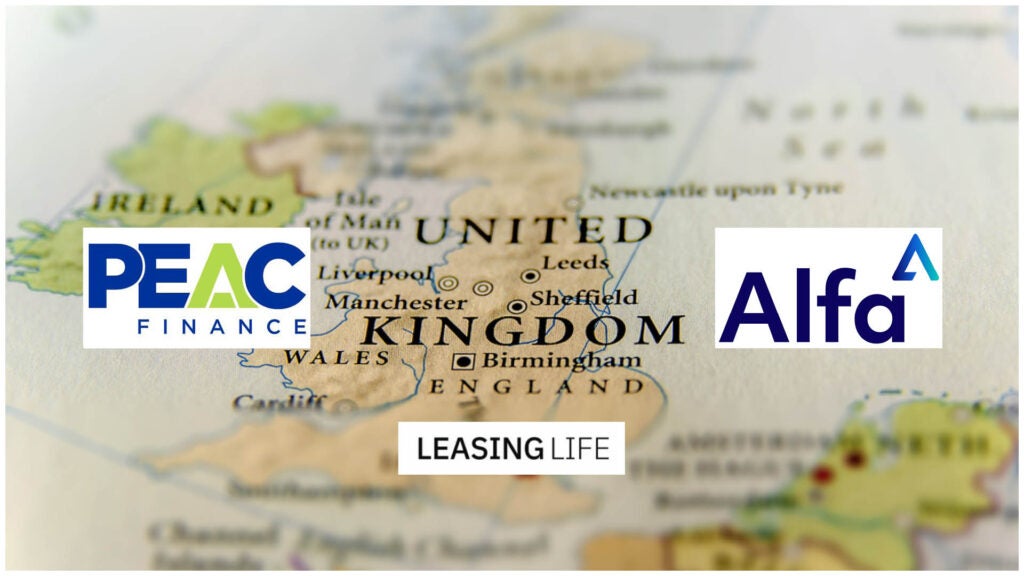New business volumes in Europe’s helicopter finance
market may not soar above those experienced by the vehicle fleet or
production equipment sectors, but for the specialists involved,
helicopter leasing can be a short flight to a steady profit. Grant
Collinson investigates.
“It is a pretty profitable area of business”, says Alan
Cunningham, a partner in law firm DLA Piper’s asset finance
division. “And there is a lot of [helicopter finance activity] in
Europe.”
While not all helicopters in the
European fleet are leased, he says, those that are tend to be
concentrated in just a few sectors. Namely, the public sector
through police, fire service and medical evacuation helicopters,
and the oil and gas sector with its need for offshore
transport.
Nevertheless, the complexities and
limitations of helicopter leasing keep some players out, says
Philippe Foulon, Société Générale Equipment Finance (SGEF) global
head of aviation.
“It is small so it attracts fewer
lessors,” Foulon adds. “There is less appetite because it is not
glamorous, it is not big-ticket and the volumes are relatively
limited, so large banks sometimes neglect it because they see it as
not worth the investment.”
How well do you really know your competitors?
Access the most comprehensive Company Profiles on the market, powered by GlobalData. Save hours of research. Gain competitive edge.

Thank you!
Your download email will arrive shortly
Not ready to buy yet? Download a free sample
We are confident about the unique quality of our Company Profiles. However, we want you to make the most beneficial decision for your business, so we offer a free sample that you can download by submitting the below form
By GlobalDataConversely, SGEF has been in the
helicopter leasing business for more than 10 years, using the scale
of its banking parent’s scale to service global customers.

SGEF has about 130 assets in its
portfolio, which, says Foulon, may seem low, but is relatively high
given the market size.
The European civil fleet stands at
just over 7,500 helicopters and, Foulon explains, the number of
leased helicopters is only a small portion of this total, with the
potential for between one and five new helicopters a year to be
leased in any given European country. With SGEF looking to be
involved in around 50% of these deals, new business volumes can be
volatile, he says.
Helicopters are technically
complicated assets and lessors tend to look at deals very carefully
because clients tend to be small-sized operators, he adds.
“They don’t give the banks the
image of large, financially strong entities, but they are looking
for 10 years’ finance with substantial residuals,” says Foulon.
These aspects of the market inhibit
some lessors and therefore the sector is dominated by a small
number of specialist lessors which are comfortable with the assets
and able to decide which of the small operators are good
performers, says Foulon. “It needs expertise combined with track
record.”
Another lessor with a track record
in helicopter leasing is UK lessor Lombard. Mark Jamieson, head of
helicopter finance at the RBS-owned asset finance firm, says the
outlook for helicopter leasing, particularly in the oil and gas
sector, which Lombard chiefly supports, is positive.
“We believe there is significant
growth potential in this space,” says Jamieson. “Our relationship
with manufacturers, our existing customer base, the evolution of
emergency medical services and search & rescue, and a growing
demand for oil and gas are influencing factors.”
Helicopter operators, says
Jamieson, increasingly use a mix of funding structures, with more
borrowers looking to off-balance sheet structures leading to a
growing demand for leasing.
Jamieson also points to the global
demand for oil, with crude prices staying above $100 a barrel,
leading to a strong market for offshore helicopters, and he says
manufacturers are confident about the commercial helicopter market
and of a good level of new orders for 2012.
DLA Piper’s Cunningham, suggests
that only the VIP charter sector, as a non-essential luxury, has
suffered a significant fall in business. However, the London
Olympics will increase charter helicopter activity.
He says business levels in the
public sector and the offshore hydrocarbon industry are doing well.
The latter is the reason another UK bank, Barclays, entered the
helicopter leasing market in the past year.
Alex Brown, head of asset finance
at Barclays, explains that the bank’s ties with the oil and gas
industry meant moving into helicopter finance was a natural step
and the bank has been writing transactions for 12 months.
“Asset finance requires knowledge
of the asset and we have a good combination of asset knowledge and
sector knowledge,” says Brown.
According to Brown, helicopter
leasing was highlighted by Barclays’ sector analysis of the oil and
gas industry as having the potential to be profitable.
Brown is cautious, however: “Real
profitability is gauged at the end of the transaction and we have
only been in helicopter leasing for 12 months.”
Profit is there to be made at the
end of a lease. SGEF’s Foulon says residual values for helicopters
are consistently higher than the fixed-wing aircraft his department
also leases. But, Foulon says, the profit is modest.
“We view it as having a marginal
opportunity cost; if we were to invest from scratch and consider
doing it on a country-by-country basis, it wouldn’t be profitable,”
he says. Rather, SGEF’s economy of scale and global network make it
possible.
Regardless of profit margins, the
helicopter sector is one which, for Foulon, relies upon lease
funding. “It is a perfect example of a pure leasing situation – the
clients do not have the capacity to acquire bank finance and
liquidity levels do not match this kind of investment,” he adds.
“They need leases because they might have long-term contracts, but
it would not match the useful life of the helicopter.”
And, as Cunningham points out, for some industries, helicopters
are not a glamorous form of transport, but the only way to get from
A to B.







